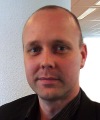Principles and Practices of DevOps Track
 Andrew Clay Shafer Track Chair |
What changed when application lifecycle transitioned from a software artifact shipped in shrink-wrap to a highly scaled, highly available service oriented world? DevOps is the label for the professional and cultural movement as well as the principles and practices of the high performing teams who are literally setting new standards in what is practical and possible. This track will shed light on the tools, processes and cultures that are evolving on the edge of the DevOps movement, and how that is impacting what is happening in both startups and the enterprise. Developers, system administrators, testers, product owners, and technical managers will gain an understanding of what is possible with the best moderns tools and processes with perspectives, principles and practices to optimize your organizational workflows.
The DevOps track will explore topics like:
|
Breakout Sessions
 Steve Speicher OpenShift Red Hat  John Wiegand Senior Technical Staff IBM Rational |
|
Continuous Delivery Pipeline for Hybrid Cloud
|
|
 Dominica Degrandis Director of Training and Coaching LeanKit |
|
Staying Focused with Conflicting Priorities
Clear priorities are vital for reducing expensive context switching. But they are tough to get when competing requests from many customers arrive simultaneously. This talk addresses what clear priorities can do for teams and how a sensible prioritization method helps teams increase throughput through a pipeline. |
|
 Chris Brown Gun for Hire |
|
What is a "DevOps Transformation?"
What are they doing differently today, or at least hoping to do? They are redefining their businesses based on code and operations, leveraging large-scale IT to rapidly delivery new services and applications to market. DevOps is not about tools or practice. It is a psychological reaction to this shift. Over the coming years, becoming a "coded business" will be the focus not just of the web elite, but of most major enterprises. I would like to explore this story with you, discussing the business, technology and people who are a part of this change. |
|
 Allan Wagner Technical Marketing Manager IBM Rational |
|
Continuous Testing in Today’s DevOps World
|
|
 Andy Troutman Development Manager Amazon |
|
Software Delivery Patterns in the Cloud
|
|
 Mike McGarr Engineering Manager Netflix |
|
Freedom and Responsibility at Netflix: Centralized Team in a Decentralized World
In this talk, Mike will explore the challenges of building and operating a centralized service team in the decentralized microservice world of Netflix. This includes building tools customers love, standing up an effective customer service model, productizing innovations, enabling self-service tooling, and providing consulting services to engineering teams. Mike will share tips on how to effectively establish a “tools team” in your organization. Related Resources:GeekWire Interview: Deploying code The Netflix Way Session: Operational Insight: Concepts and Real-World Applications |
|
 Pete Cheslock Sr Director, Ops and Support Threat Stack |
|
Continuous Security
If the goal is frictionless releases, then we must build a trust but verify model of access control. The wall that existed between Engineering and Operations has largely been broken down with both sides embracing change. But now we’re faced with a new wall, one that exists between Security and the rest of the technical organization. Fortunately, there are collaborative ways to overcome this wall. We'll discuss the role of security in this new *aaS landscape. We'll talk about things to do when you have a dedicated InfoSec team, and tools you can use when you don't. We'll explore what it means to build in security in the same way you build in quality as part of your continuous delivery pipelines. And how you can strengthen your security posture while maintaining your ability to move quickly and deliver value to your customers. |
|
 Dan Piessens Sr. Agile Consultant Centare |
|
From Rags to Riches: Transforming a Team with Continuous Delivery
|
|
 Arnoud Lems Agile Delivery Lead Avanade |
|
Automating Deployments with Desired State Configuration
|
|
 Matt Stratton Solutions Architect Chef |
|
The Five Love Languages of DevOps
|
|
 Sam Fell Product Manager Electric Cloud |
|
Making CD Safe for Ops: Introducing Monitoring Earlier in the Agile Cycle
Join CTOs from Electric Cloud and Boundary as we discuss best-practice patterns and processes Dev & Ops teams can embrace to:
|
|
 Roy Rapoport Manager, Insight Engineering Netflix |
|
Operational Insight: Concepts and Real-World Applications
In this talk, we propose a conceptual framework to describe the utility of monitoring systems, covering value creation at the platform, visualization, and analytics levels and tying them to the concerns of their users. Once such a framework is described, we intend to demonstrate one real-world manifestation of these ideas -- Real-Time Operational Insight systems at Netflix, where telemetry is a 1.2-billion-metrics-per-minute business, and Insight is considered a first-level, business-critical function. While some of the engineering described requires significant specialized knowledge and investment, our goal is to provide relevant and meaningful information usable for anyone working in an environment where applications are operating in production environments. |
|
 J Paul Reed Consultant |
|
The Changing Role of Release Engineering in a DevOps World
But with all the buzz around new techniques and technologies, it's easy to get lost in the "We deploy hundreds of times a day!"-cacophony and the new "DevOps tools." In this talk, we'll look at the conversations DevOps is revitalizing around age-old topic in release engineering and application life cycle management, plus look at the aspects of software delivery which DevOps does not magically solve. Whether you're a release engineer wondering how you fit into "the DevOps" or you're responsible for the release engineering function in your organization, we'll explore what the new world looks like for this critical role... and which aspects of it our industry is leaving behind. |
|







